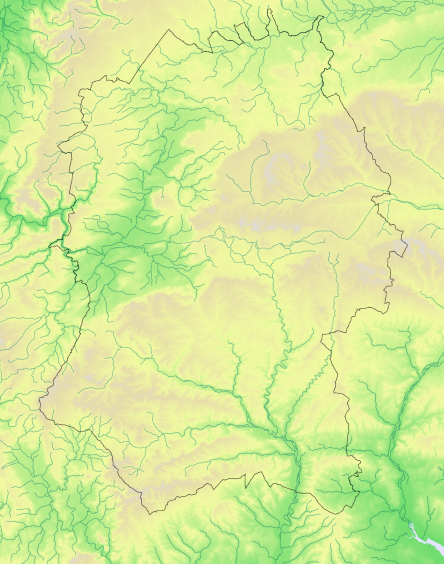Goldfinch Carduelis carduelis
Breeding distribution 2007–2012
Common resident, especially at urban edges, more widespread in winter
Atlas species lists
- Breeding distribution 1995–2000
- Summer abundance 1995–2000
- Winter distribution 1995–2000
- Winter abundance 1995–2000
- Breeding distribution 2007–2012
- Summer abundance 2007–2012
- Winter distribution 2007–2012
- Winter abundance 2007–2012
- Breeding distribution change
- Summer abundance change
- Winter distribution change
- Winter abundance change
More Goldfinch maps
- Breeding distribution 1995–2000
- Summer abundance 1995–2000
- Winter distribution 1995–2000
- Winter abundance 1995–2000
- Breeding distribution 2007–2012
- Summer abundance 2007–2012
- Winter distribution 2007–2012
- Winter abundance 2007–2012
- Breeding distribution change
- Summer abundance change
- Winter distribution change
- Winter abundance change
Map explanation
This map shows the breeding season distribution of the species in Wiltshire as revealed by the shared fieldwork for Bird Atlas 2007-2011 (BTO 2013) and for Wiltshire Tetrad Atlas 2007-2012.
Key
Status
Nos tetrads

Present
62
7%

Possible breeding
278
30%

Probable breeding
281
31%

Confirmed breeding
258
28%
Total
879
96%
Goldfinches are found from the Atlantic islands and North Africa, throughout Europe (except much of Fenno-Scandia and north Russia), east in Asia as far as Lake Baikal and western Mongolia, and from Asia Minor and parts of the Middle East to the western Himalayas. They have also been introduced into Bermuda, Argentina, south Australia and New Zealand.
In Britain Goldfinches are found in the breeding season throughout England and Wales, and since the 1968-72 Breeding Atlas they have also expanded into Scotland where they are now present everywhere except in the northern highlands and in parts of the Northern and Western Isles. Overall their British range expanded by 16% between 1968-72 and 2007-11. Their population fell sharply between the mid 1970s and mid 1980s, probably as a result of agriculrural itensification leading to loss of the undeveloped grassland areas which provided most of their food. But this was then followed by a rise in numbers as they found new sources of food in suburban gardens: in 1995 Goldfinches were recorded in only 10% of gardens in Britain; by 2011 they were recorded feeding in 50-60% of gardens. The 2019 BBS Report recorded a population increase of 155% since 1995. A large proportion of British Goldfinches migrate to winter in France and Spain
In Wiltshire towards the end of the 19th century the species was descibed as declining rapidly as more and more wasteland and thistle beds were taken into cultivation, but also because huge numbers were being trapped for sale as cage birds. The decline was halted in the early 20th century following the introduction of bird protection legislation and also as land fell out of use during the agricultural depression. By the 1930s numbers were increasing steadily, though with occasional setbacks when cold winters led to increased mortality. Birds of Wiltshire recorded them present in 789 tetrads with breeding in 428, WTA2 recorded them in 879 tetrads with breeding in 539.
References
The following references are used throughout these species accounts, in the abbreviated form given in quotation marks:
“1968-72 Breeding Atlas” – Sharrack, J.T.R. 1976: The Atlas of Breeding Birds in Britain and Ireland. T. & A. Poyser
“1981-84 Winter Atlas” – Lack, P.C. 1986: The Atlas of Wintering Birds in Britain and Ireland. T. & A. Poyser
“1988-91 Breeding Atlas” – Gibbons, D.W., Reid, J.B. & Chapman, R.A. 1993: The New Atlas of Breeding Birds in Britain and Ireland 1988-91. T. & A. Poyser
“Birds of Wiltshire” – Ferguson-Lees, I.J. et al. 2007 : Birds of Wiltshire, published by the tetrad atlas group of the Wiltshire Ornithological Society after mapping fieldwork 1995-2000. Wiltshire Ornithological Society.
“Bird Atlas 2007-2011” – Balmer, D.E., Gillings, S., Caffrey, B.J., Swann, R.L., Downie, I.S. and Fuller, R.J. 2013: Bird Atlas 2007-2011: the Breeding and Wintering Birds of Britain and Ireland
“WTA2” – ("Wiltshire Tetrad Atlas 2 ") the present electronic publication, bringing together the Wiltshire data from “Birds of Wiltshire” and “Bird Atlas 2007-11”, together with data from further fieldwork carried out in 2011 and 2012.
"Hobby" - the annual bird report of the Wiltshire Ornithological Society.

